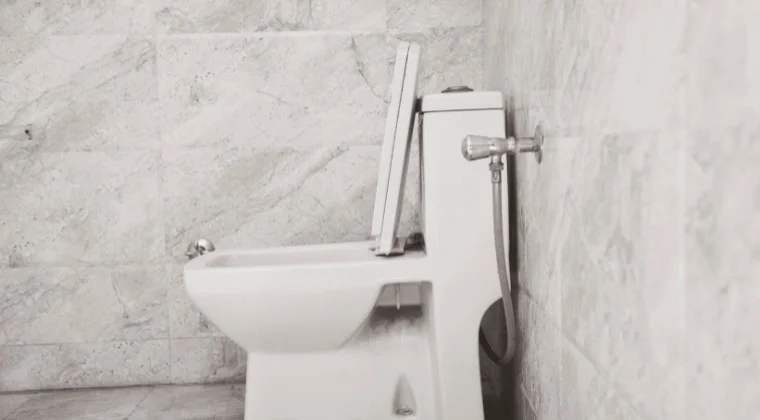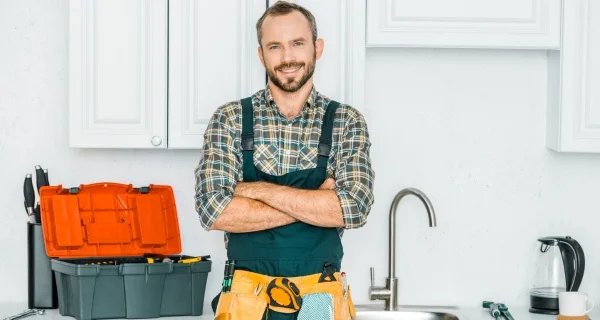
Do Toilets Have Separate Drains
Have you ever wondered whether toilets have separate drains? The drainage system of a toilet is quite complex.
Knowing how it all works helps us understand why keeping it in good shape is crucial to avoid problems.
Let's dive into what makes toilet drains special and why keeping them clear is key.
Key Takeaways
- Toilets have a separate drain pipe connecting to the main sewer line.
- Drain pipes carry waste to the sewer system efficiently.
- Trap in the toilet prevents odors from escaping through the drain.
- Properly designed drainage systems ensure smooth water flow.
- Dual-flush toilets aid in water conservation through efficient drainage.
Anatomy of a Toilet Drain System
The anatomy of a toilet drain system consists of several key components that work together to efficiently remove waste and water from the toilet bowl. The drain design is vital for proper functioning.
The drain pipe extends from the toilet bowl into the sewer system, allowing waste and water to flow out of the bowl and into the plumbing.
The size and slope of the drain pipe are carefully calculated to guarantee smooth water flow and prevent clogs.
Gravity and pressure facilitate water flow within the toilet drain system. When you flush the toilet, gravity pushes water and waste down the drain pipe.
The water flows through the trap, a curved pipe section that holds water to prevent sewer gases from entering the bathroom.
Function of the Toilet Trap
The toilet trap plays a vital role in your plumbing system. It prevents unpleasant odors from rising up through the toilet.
Moreover, it guarantees that water remains in the bowl, allowing for proper drainage while stopping harmful sewer gases from entering your home.
Trap Prevents Odors
Within the plumbing system of a toilet, a pivotal component known as the trap serves the critical function of preventing unpleasant odors from escaping into your bathroom. The trap is strategically designed in the toilet's drainage system to create a water seal that blocks foul smells from backing up through the pipes and into your living space.
As wastewater and solid waste are flushed down the toilet, they flow through the trap, which retains a certain level of water to form a barrier, effectively sealing off any odors that might otherwise permeate your bathroom.
Ensures Proper Drainage
A properly functioning toilet trap guarantees efficient drainage within the plumbing system by creating a water seal. The trap, typically shaped like a 'U,' is located beneath the toilet bowl and is an integral component of the toilet design.
Its purpose is to prevent sewer gases from entering the bathroom while allowing waste and water to flow through. The water in the trap forms a seal that acts as a barrier against odors and gases, ensuring that only liquids and solids can pass through.
The plumbing layout of toilets incorporates the trap to guarantee proper drainage solutions. Without the trap, there would be a direct path for odors and gases to travel back up through the toilet and into the bathroom, causing unpleasant smells and potentially harmful health effects.
Stops Sewer Gases
To prevent sewer gases from entering your bathroom, the toilet trap, shaped like a 'U,' forms a water seal beneath the toilet bowl. This important component in drainage system design serves a critical function in gas prevention and odor control.
The plumbing layout of the toilet trap ensures that there's always water present in the U-shaped bend, creating a barrier that blocks foul-smelling sewer gases from backing up into your home.
The trap's design effectively stops sewer gases by trapping water in the bend, which acts as a barrier preventing gases from traveling up the drain pipe and into your bathroom.
Have clogged toilet drain? Our drain cleaning experts is here
Separating Waste From Water
One fundamental aspect of toilet design involves efficiently separating solid waste from liquid waste and water flow. This process is vital for proper waste separation, drainage efficiency, water conservation, and effective waste management.
To achieve this, toilets are designed with specific features and mechanisms that facilitate the separation of waste from water effectively:
- Dual-Flush Systems: These systems allow users to choose between a partial flush for liquid waste and a full flush for solid waste. By giving this option, water conservation is promoted as less water is used for liquid waste disposal.
- Trap Mechanism: The trap, located beneath the toilet bowl, prevents foul odors and gases from entering the bathroom while still allowing waste and water to flow out efficiently. This mechanism aids in maintaining hygiene and proper waste management.
- Efficient Drainage Design: The toilet's drainage system is designed to swiftly carry waste and water away from the bowl and into the sewer or septic system. This design guarantees that waste is disposed of promptly and effectively while minimizing water usage and promoting cleanliness.
Common Toilet Drain Issues
Toilets commonly experience drainage issues that can affect their performance and functionality. When dealing with common toilet drain issues, it's important to address them promptly to prevent further damage and inconvenience.
Here are some key points to keep in mind:
- Toilet clog prevention: Regular maintenance and monitoring can help prevent clogs from forming in the drain. Avoid flushing items that can easily block the pipes, such as paper towels or sanitary products. Using a plunger or a drain snake can help clear minor clogs before they become a significant issue.
- Drain cleaning: Periodic drain cleaning is vital to keep the toilet drain clear of any buildup or debris. Chemical drain cleaners can be effective, but using natural alternatives like baking soda and vinegar can also help maintain a clean drain without harsh chemicals that may damage the pipes.
- Pipe repair, leak detection: If you notice water pooling around the base of the toilet or detect a foul odor, it could indicate a leak in the pipes. Promptly addressing pipe repairs and conducting leak detection can prevent further damage and maintain the proper functioning of the toilet. Regular inspections by a professional plumber can help catch any potential issues early on.
Frequently Asked Questions
Can Different Types of Waste Be Flushed Down the Toilet?
You can't flush just any waste down the toilet. Regulations govern what can go in. Proper waste disposal is essential for sanitation and the environment. Be mindful of what you flush for everyone's well-being.
Do Toilets in High-Rise Buildings Have Different Drain Systems?
In high-rise buildings, toilets often share a common soil stack for drainage efficiency. Plumbing maintenance guarantees proper function and adherence to building regulations. Understanding this system aids in effective management and upkeep of the building's plumbing infrastructure.
Is There a Risk of Sewer Gas Escaping From the Drain?
To prevent sewer gas escape and maintain good indoor air quality, proper drain maintenance is essential. Regularly check drain ventilation to avoid health risks from odors. Confirm drains are functioning well to control odor and safeguard health.
Final Thoughts
Toilets indeed have their own special drains that are crucial for effectively getting rid of waste and water. The trap underneath the toilet stops bad smells from coming out and keeps a water barrier, while the soil pipe moves the waste away to the main drain line which is connected to the city's sewer system.
Knowing how the toilet's drain system works is really important for keeping it running smoothly and avoiding problems like blockages.
If you'd rather have professionals handle your plumbing needs, Berkeley Plumbing Pros is here to help. Give us a call at (877) 959-6069. We serve Berkeley and the nearby areas.

